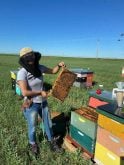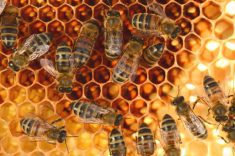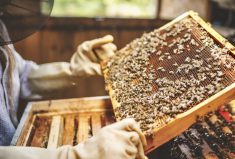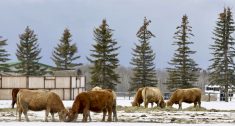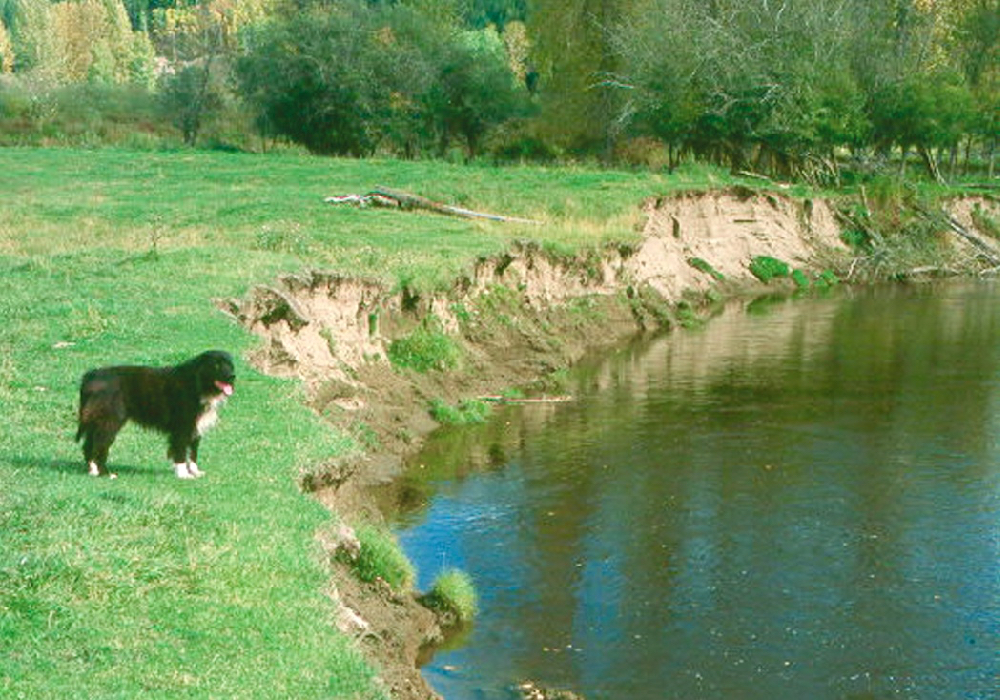Some people look for signs — other people just find them. For producer Don Ruzicka of Killam, the motivation behind the past three decades of land management on his farm was quite literally a sign.
Before he purchased his grandparents’ farm in 1983, Ruzicka worked in the logging industry. “The first day I flew into camp on a float plane I noticed a sign that said, ‘This tree farm is managed by the Tahsis Company. For every tree harvested, two are planted.’ That stuck in my head.”
Today Ruzicka’s certified organic livestock farm features a shelterbelt on every quarter section, including three experimental “eco-buffers.” And it was all brought about by Ruzicka remembering the message on that sign after years of clearing trees and draining wetlands.
Read Also

Horns aren’t unlocking anytime soon on livestock transport standards
Standards good enough meet the definition of “humane” animal transportation still vary widely between what what industry wants, what animal rights advocates want and, between the two, what federal regulators decide is good enough.
For him, the biggest advantage of shelterbelts and other riparian areas is providing habitat for a wide array of beneficial species, particularly pollinators.
“I’m a huge fan of pollinating insects because every third bite of food we take depends on a pollinator,” he said. “When I look back at the trees we’ve planted, I consider it to address climate change, carbon sequestration, food security, resilience and sustainability — one tree at a time.
“For us, ‘appropriate technology’ has been the gift of trees from the Prairie Farm Rehabilitation Administration (PFRA) and its knowledge; a good tree spade for planting; and a passion to make positive change.”
Stopping a ‘vicious circle’
Ruzicka first moved to organic for a very simple reason.
“We started growing some wheat without any pesticides or fertilizer when we moved here in 1983 hoping to alleviate my allergies,” he said.
But in a bid to be profitable, he engaged in other practices that he now considers a mistake.
“I cleared trees and in dry years I would disc the sloughs and the wetlands and try to get more real estate to increase profit and plant more grass to have more cattle and we just got deeper in debt,” he said. “So we decided to take a different direction but we weren’t sure what that would be.”
The first step was planting some tree seedlings provided by the now defunct PFRA in 1984. A dozen years later, Ruzicka and wife Marie attended a course in Camrose on holistic management.
“It basically taught us that everything I had removed — the trees, the sloughs and the wetlands — are actually things you need to produce healthy food. Our cattle were going into the creeks and overgrazing and I had no idea that was compromising the health of the area.”
In 2004, the PFRA introduced a new plastic mulch program to encourage tree planting.
“The mulch provided super increased livability of the trees as it kept weeds away from the trees and allowed them to get off to a great start. Since 2003, we have planted over 60,000 trees from the PFRA shelterbelt program. From 1984 to 2003 we planted about 40,000 trees.
“As those trees started to grow and flower, all of a sudden we had more insects and birds. I started thinking that these PFRA guys were really on to something.”
A ‘buffet’ for wildlife
The Ruzickas — who have a small cow-calf herd, some pasture-raised pigs and poultry, and background yearlings — have three “eco-buffers” on their land. Funded by PFRA, these arrangements of shelterbelts represent a living laboratory in which to study species behaviour within a number of shelterbelt designs.
“There are three different treatments,” he said. “There’s a two-row treatment which is a monoculture — all chokecherries. The next one is a three row with about 12 different species. The next one is a seven row with 41 species altogether — 21 are shrubs, deciduous conifers, berry bushes et cetera and the remaining 20 are native flowering plants.
“The native pollinators include butterflies, moths, bumblebees, beetles, wasps, incidental pollinators like flies et cetera, and also bats and hummingbirds.”
It soon became clear to Ruzicka that the rows with the most diverse plant species were also those that attracted the most insect and bird species.
“It makes so darn much sense,” he said. “If you were to go to a different buffet every week for a month, you’d probably go back to the one that has the most diverse food. Nature’s not a lot different from us.
“With the two rows of chokecherries, the monoculture, those plants only flower for maybe three weeks. With the three row the flowering is probably four or five weeks. But in the seven row there’s always something flowering from the very first warm spell in the spring right up to freeze-up in October. That buffet is open for business.”
The shelterbelts benefit the adjacent pasture by both creating pollinator habitat and capturing snow.
“When we do a tour here, every once in a while I’ll stop and quickly identify some of the species in our shelterbelts,” he said.
“One day someone commented on how much thicker the alfalfa was by the shelterbelt. I said one reason for that is when a two-row shelterbelt traps snow, that snowdrift will go out into the field so as it melts, the grasses and legumes are going to grow really well so that makes more pasture. If you go out 150 metres the alfalfa is not quite as thick. Maybe that has something to do with the native pollinators.”
Looking towards the future
Ruzicka does not have any immediate plans to build new shelterbelts.
“Right now we’re in what we call ‘maintenance and replacement mode,’” he said. “In Flagstaff County where we live, they’re very proactive — any trees that we order they pay half the price. Right now we’re mainly ordering replacements. Every year when those trees come I just head out into the areas where there’s a dead tree — or a tree that’s been raked over by a deer and it’s either dead or going to die — and I either cut it at the stem or pull it out and put in another one.”
He hopes that others in the agriculture community will recognize the value of shelterbelts and other riparian zones before it’s too late.
“I’m concerned that these places are disappearing as we intensify agriculture to take it right to the max. If we start losing too much of this habitat it’s going to be too far for some of these birds and pollinators to travel.”




